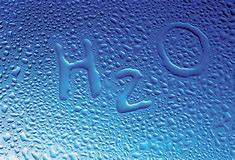Wildlife can provide continuous nutrition and income
Sustainable construction, also known as green construction, is concerned with the economic, social, and environmental impact of creating a usable structure.
Sustainability is a balancing act. The United Nation’s 1987 Report of the World Commission on Environment and Development: Our
Common Future noted that sustainable development meets the needs of the present without compromising the well-being of future
generations.
Air quality
What is Air quality?
The Environment Act 1995 requires each local authority to periodically review air quality in the area. The
process of reviewing and assessing air quality is a cornerstone of the system of local air quality
Quality Management Area and prepare action plans to aim to meet the Governments Objectives.
Common cases of air pollution are caused by:




soil
1. Industrial Activity: Industrial activity has been the biggest contributor to the problem in the last century, especially since the amount of mining and manufacturing has increased. Most industries are dependent on extracting minerals from the Earth. Whether it is iron ore or coal, the by products are contaminated and they are not disposed off in a manner that can be considered safe. As a result, the industrial waste lingers in the soil surface for a long time and makes it unsuitable for use.
2. Agricultural Activities: Chemical utilization has gone up tremendously since technology provided us with modern pesticides and fertilizers. They are full of chemicals that are not produced in nature and cannot be broken down by it. As a result, they seep into the ground after they mix with water and slowly reduce the fertility of the soil. Other chemicals damage the composition of the soil and make it easier to erode by water and air. Plants absorb many of these pesticides and when they decompose, they cause soil pollution since they become a part of the land.
What is Sustainable Wildlife Management?
Sustainable wildlife management involves the sound management of wildlife species in order to sustain their populations and habitat over time, taking account of the socioeconomic needs of human populations. To achieve this, land users within wildlife habitat must be mindful of the impact of their activities on wildlife resources and habitat, and on other user groups.
Human fate is tightly linked with biodiversity. Bio- diversity – that is, ecosystems, species and genetic diversity – underpins the productivity, resilience and adaptive capacity of ecosystems and is essential for maintaining ecological processes. Biodiversity contributes to a
multitude of products and ecosystem services that sustain human well being, including water and air purification, timber and other wild resource production, provision of oxygen, medicine. Wild animals are an integral part of biodiversity, and play an important role in ecological processes such as pollination. Wildlife is also important as a source of food and clothing, for recreation, tourism, and cultural uses, and as esthetic and cultural icons in most areas of the world.





Approximately 70% of freshwater is consumed by agriculture.
Different bodies of water provide livelihood and economic security to different countries.
facts on water pollution Death of aquatic (water) animals
The main problem caused by water pollution is that it kills organisms that depend on these water bodies. Dead fish, crabs, birds and sea gulls, dolphins, and many other animals often wind up on beaches, killed by pollutants in their habitat (living environment).
What is land pollution?
Land pollution is the deterioration (destruction) of the earth’s land surfaces, often directly or indirectly as a result of man’s activities and their misuse of land resources.
The ozone layer is a deep layer in the stratosphere, encircling the Earth, that has large amounts of ozone in it. The layer shields the entire Earth from much of the harmful ultraviolet radiation that comes from the sun.
Interestingly, it is also this ultraviolet radiation that forms the ozone in the first place. Ozone is a special form of oxygen, made up of three oxygen atoms rather than the usual two oxygen atoms. It usually forms when some type of radiation or electrical discharge separates the two atoms in an oxygen molecule (O2), which can then
individually recombine with other oxygen molecules to form ozone (O3).
Effects on Plants
UVB radiation affects the physiological and developmental processes of plants. Despite mechanisms to reduce or repair these effects and an ability to adapt to increased levels of UVB, plant growth can be directly affected by UVB radiation.
Soil - https://www.environmentalpollutioncenters.org/soil/
https://www.conserve-energy-future.com/causes-and-effects-of-soil-pollution.php
Ozone-
http://www.weatherquestions.com/What_is_the_ozone_layer.htm
https://www.epa.gov/ozone-layer-protection/health-and-
environmental-effects-ozone-layer-depletion
Water quality -
http://eschooltoday.com/pollution/water-pollution/effects-of-water-pollution.html
